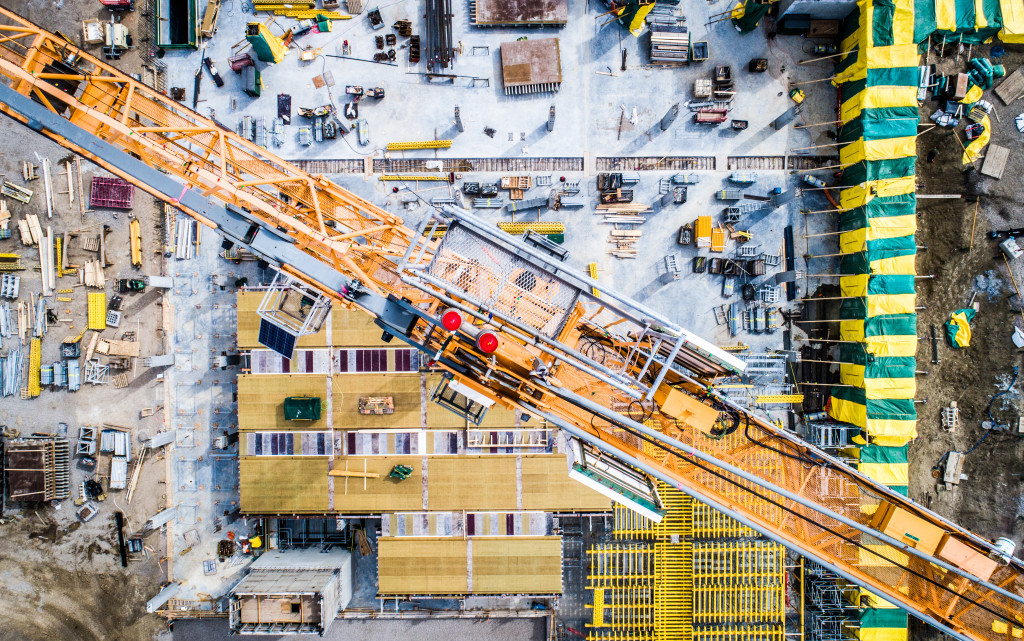- The commercial construction industry is now worth over a trillion dollars, presenting high competition and opportunity for success.
- Economic volatility poses a significant risk to the industry due to changes in material and labor costs.
- Safety must be prioritized to avoid costly fines, lawsuits, or fatalities.
- Effective marketing strategies should be used to build long-lasting relationships in the industry.
- Investing in professional services and cranes and creating a risk management plan can help reduce potential losses.
Commercial construction is undoubtedly a lucrative industry, but it has inherent risks. Starting a commercial construction firm is no easy feat, and it requires careful evaluation of the risks and rewards one can expect to encounter on this journey. Here’s a look into the risks of starting a commercial construction firm and discuss measures entrepreneurs can take to mitigate them.
The Construction Industry Net Worth
The construction industry is now worth over a trillion dollars. This growth is attributed to the increasing demand for new builds, remodels, and renovations of existing buildings. While this means there is plenty of opportunity for success in commercial construction, it also means that competition is fierce. Here are some risks you need to know about this industry.
Economic Volatility
The unpredictable nature of the economy poses a significant risk to the commercial construction industry. The construction industry relies heavily on economic stability, and any economic downturn can adversely impact business operations.
From the costs of raw materials to labor costs, almost everything in this industry is subject to economic volatility. Entrepreneurs should be wary of this risk and prepare for the unexpected by having a diversified range of construction services or developing long-term business strategies that can withstand economic downturns.

Safety Concerns
With the specific regulations, guidelines, permits, and processes that need to be followed, construction sites pose an inherent risk to the safety and well-being of workers and public members.
A construction safety violation can lead to costly fines, lawsuits, and even fatalities. Entrepreneurs should prioritize the safety of their workers and ensure that their company complies with all necessary regulations. Proper training of employees, regular safety inspections, proper documentation for permits, and the implementation of comprehensive safety procedures (such as personal protective equipment) should be the cornerstone of any business owner’s safety strategy.
Competition
The commercial construction industry is highly competitive, and a new firm must work hard to establish its place in the market. A lack of customers can lead to lost profits, strains, and even the complete failure of a company.
For startups, competing with established competitors in the market can pose a significant challenge. Entrepreneurs must implement successful marketing strategies, invest in digital channels, and be intentional about building long-lasting relationships in the industry. This strategy will help to bring in customers and establish a reliable client base, helping new business owners establish a foothold in the market.
Contract Risks
Contracts can be complicated, lengthy, and very specific in commercial construction. The contract terms can cause confusion, disputes, and even legal fees. The risk of not fully understanding the contracts or not using the right legal representation is a significant risk for new enterprises.
Entrepreneurs should hire experienced attorneys specializing in construction contracts, ensure they deeply understand all the contractual terms and agree with them before signing any document.
Accidents
Lastly, accidents can occur on construction sites. Any accident can lead to property damage, bodily injury, or even death. This risk should not be taken lightly; entrepreneurs must take the necessary measures to protect their workers and comply with regulations. Ensuring that all employees have proper safety training and providing them with the right gear is essential for reducing the risks of an accident occurring on-site.
Tips For Avoiding These Problems
Thankfully, various ways exist to avoid and manage the risks associated with commercial construction. Here are some tips to help entrepreneurs navigate this industry successfully:

Invest in a Crane
You can enhance safety guidelines and reduce the chances of accidents in your firm by investing in a crane. A self-erecting tower crane is an excellent option for any firm because it can be used in commercial areas where traffic and tall buildings surround the area. Furthermore, proper utilization of it can mean fewer accidents for your employees. It can also reduce the number of injuries and fatalities on the construction site.
Enlist Professional Help
To navigate this industry successfully, startups need to hire experienced professionals for legal counsel, accounting, insurance, safety, etc. A lawyer specializing in construction contracts is especially important as it will ensure you understand all the legal ramifications of a contract before signing it. Furthermore, hiring an accountant is essential for managing cash flows, maintaining accurate records, and filing taxes easily.
Create a Risk Management Plan
An effective risk management plan can help entrepreneurs anticipate and develop risk mitigation strategies. This plan should be comprehensive and include safety protocols, insurance coverage, emergency response plans, regular maintenance checks, etc. With such a plan, business owners can identify issues early on and take swift action to prevent potential losses.
Starting a commercial construction firm requires immense thought and planning due to its inherent risks. Before taking this plunge, several factors must be considered, from economic volatility to legal entanglements. Entrepreneurs must invest in professional services, create a risk management plan, and ensure safety protocols are in place to protect them from financial losses. By doing this, they will be well-equipped to brave the risks associated with such an endeavor.



